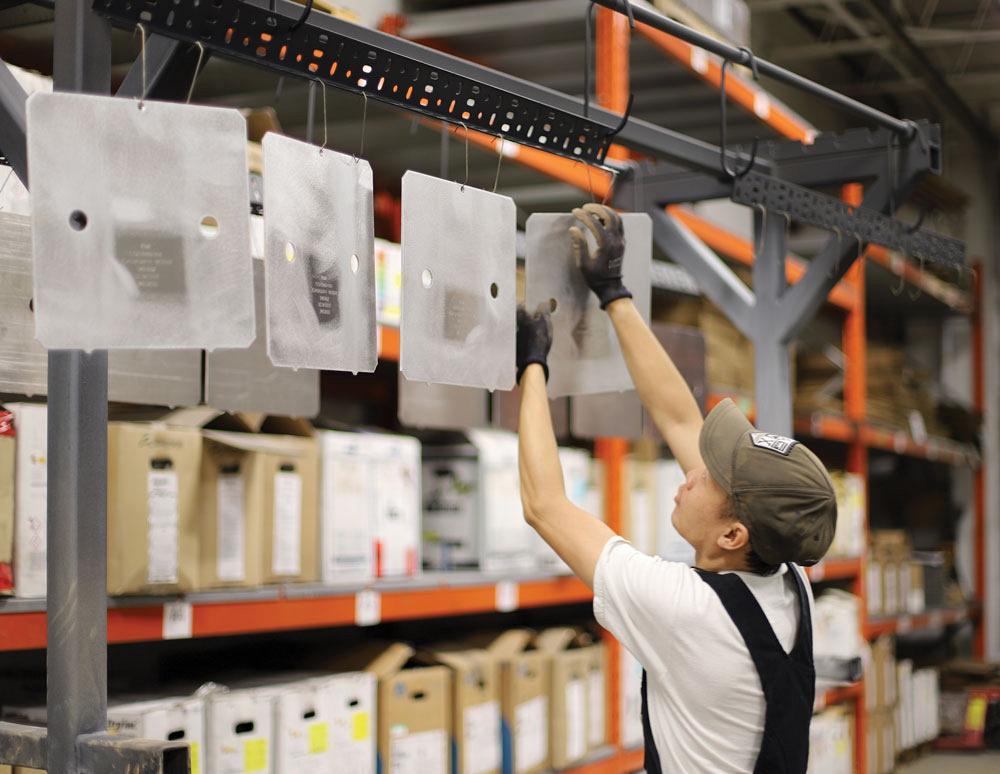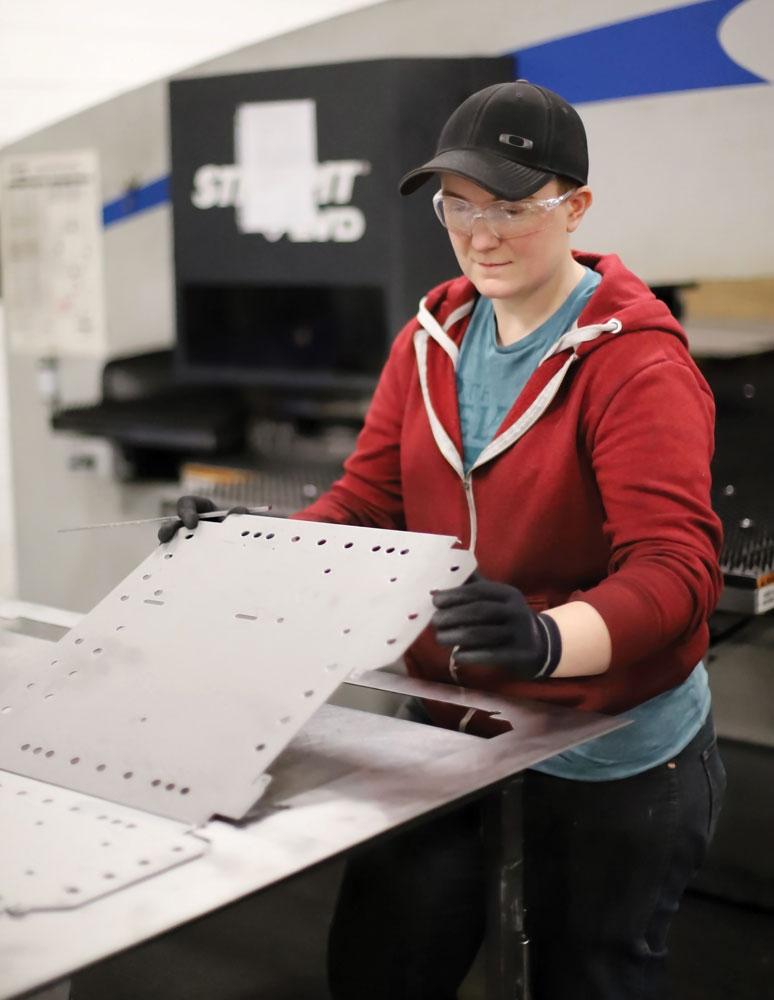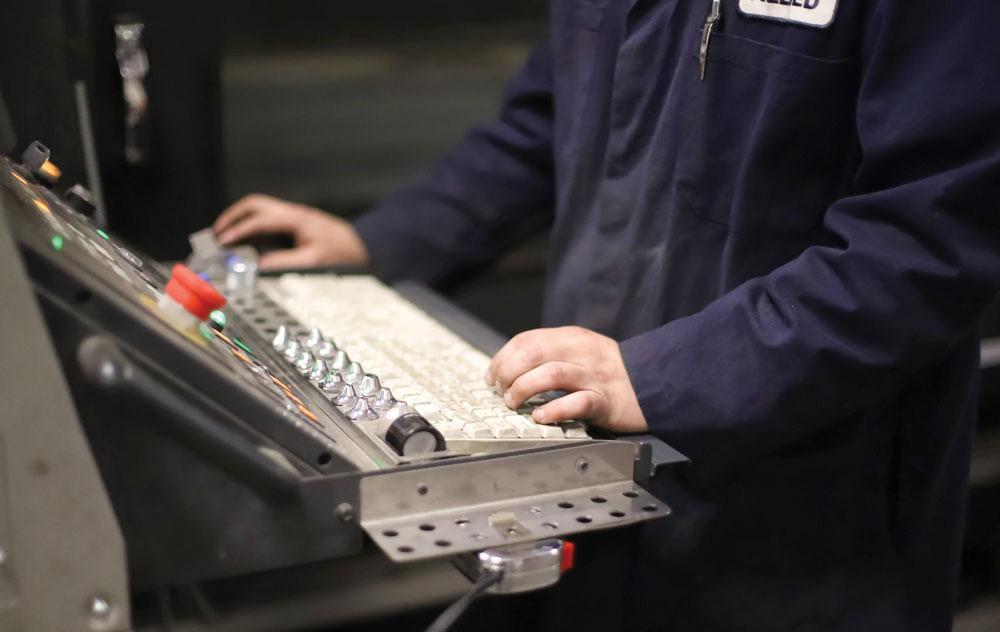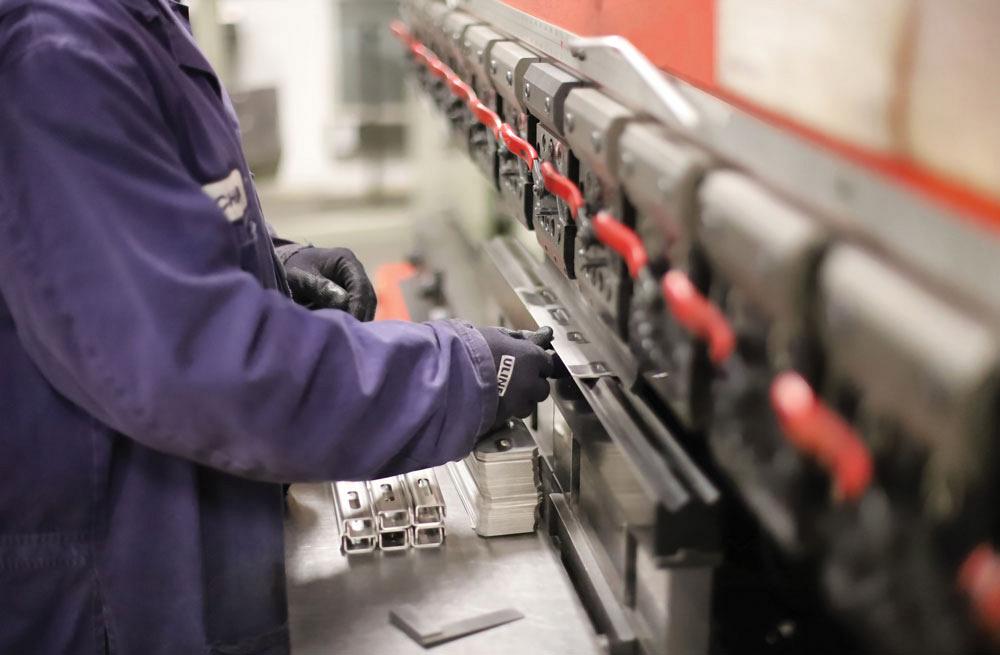Editor
- FMA
- The Fabricator
- FABTECH
- Canadian Metalworking
Allied Metal stands out with ISO
Calgary shop uses ISO to improve processes, customer connections
- By Rob Colman
- March 25, 2020
- Article
- Management

Essentially, ISO certification is about ensuring that defects in production are addressed by exploring root causes rather than solely fixing the part. The goal is a noble one but getting there requires a team effort.
Fabricators are constantly looking for ways to stand out from the crowd in their communities. Calgary-based Allied Metal Ltd. was no different when it decided that the way to make a unique statement in its market was to pursue ISO 9001:2015 certification. All indications suggest that this was the differentiation the company required to make its customers take notice.
Allied Metal has been a presence in Calgary since 1968, but its current ownership group took the helm in 2005. Glen Brooks, managing partner, came from a fab shop at that time that had specialized in production parts.
“When I came here, it was a very different experience,” he said. “Allied has always had more custom work, dealing in low-volume, high-mix jobs. In the Calgary market there are probably five or six major players in that game.”
Over time Brooks noticed a pattern that this small market created – a lot of customer churn.
“I saw that we would get a job from a customer, they would have quality issues with the product, so they would go to the next shop down the street. Eventually the same thing would happen there, and they’d move to the next shop. This would go on for about a year and a half until they would eventually come back to us and the cycle would start again. This happened everywhere. We really wanted to be the shop that stopped that cycle.”
Brooks and others who’d come from his former company had been through ISO certification and knew that the quality and assurance processes built into that certification could help create change. It was simply a matter of selling the idea of ISO to the Allied team.
Buy-in Basics
ISO 9001:2015 sets out requirements for a quality management system when an organization, as ISO’s website explains, “needs to demonstrate its ability to consistently provide products and services that meet customer ... requirements,” and “aims to enhance customer satisfaction through the effective application of the system ...”
Essentially, it’s about ensuring that defects in production are addressed by exploring root causes rather than solely fixing the part. The goal is a noble one but getting there requires a team effort.
“Our journey started out as a discussion among management to determine if this could be beneficial to the company,” Brooks said. “Once we looked into all the procedures and the change required in the corporate culture, we were all in agreement about the way forward. But the biggest portion of ISO certification success involves getting buy-in from the shop floor, so that’s what we worked on next.”

“When team members started seeing repeat jobs we do all the time come through the door, and they saw how much smoother those jobs ran, they really felt like their feedback was being listened to, valued, and implemented.”
The first thing management did was have an ISO kickoff meeting for the whole team. The purpose of that meeting was to explain ISO to those who had never experienced it, and to explain that it was not about making work more complicated but rather streamlining processes.
“What helped us a great deal was the fact that we had team members who had worked in an ISO environment and could explain how it would work to those who hadn’t,” Brooks said. “We stressed that what we aimed to do was to write a procedure that expressed the way they already did their work, and then stich up any holes we found along the way.”
Involvement
The second step for Allied was to ensure that everyone felt involved in the process.
“How we did that was to go to each station and ask staff to describe for us the job that they do from day to day,” said Brooks. “It was through that process that we began to draft our procedures and our work instructions for the guys on the shop floor. It made the whole process a lot easier. We let them dictate to us. Then, if there was an issue that we felt wouldn’t pass certification or might be convoluted, we’d go back and discuss it with them again.”
Once those points were addressed, management put together a first draft of the procedures and rolled them out for several months.
“Procedures may look good on paper, but once they are used in operations, it may be that there is too much paperwork or something like that,” said Brooks. And indeed, management did end up redrafting procedures, reset the company’s system, then followed the redrafted procedures for six months to get them down to a science and do internal audits.
“It was important to us that we treated internal audits with care,” said Sabrina Bennett, business administration manager. “We didn’t want them to be a negative process for our team members, making them understand that we were never auditing them, we were always auditing the processes. As part of that we would go back to them and ask what they thought was working and what they thought wasn’t and we’d redraft the procedure from there.”
One important detail to note is that Allied already had a functioning ERP system in place, so employees were already well-versed in using it day to day.
“Staff were already logging into and out of jobs, recording quantities, scrap values, stuff like that, so that was a huge help,” said Brooks.

Brooks encourages anyone interested in pursuing ISO 9001:2015 certification to be sure that they have an ERP system in place first.
“The work instructions were the only real addition,” said Bennett. “Having the procedure in place just held them more accountable for the job they were already doing.”
Internal Impact
Initial rollout of the procedures created a lot of positive feedback among team members, said Brooks.
“Before, we basically worked on a ‘tribal knowledge’ system where, when you’d done a job 20 times, it wasn’t in the documentation but you just knew that you had to bend the part a certain way or adjust your settings on a particular tool to make it turn out properly,” he explained. “What the procedures did was make it easier for guys on the shop floor to communicate with the front office and clean up residual issues that had been going on forever. That created a huge change in a short six months.
“When team members started seeing repeat jobs we do all the time come through the door, and they saw how much smoother those jobs ran, they really felt like their feedback was being listened to, valued, and implemented.”
The biggest impact on the floor was how problem parts were managed.
“I think we lost a lot of time previously with guys wandering around asking what they should do with a problem part,” said Brooks. “Now they know to take it to the quarantine area where corrective action can be taken by us looking for the root cause of the problem.”
This impact is reflected in the corporate culture in general.
“I think everyone is more engaged,” said Brooks. “Everyone has a commitment to improvement, for both the company and themselves. It’s great to see.”
Bennett concurred. “People really take the standards seriously,” she said.

"It's a lot of work for the guys on the floor. If they don't see benefits in return, you are going to have a very hard time with buy-in."
This has manifested itself through staff suggesting ways in which to improve manufacturing processes and suggesting useful machine investments. The feedback has created efficiencies and quality improvements.
External Impact
Customer relations, at the same time, have matured.
“It was actually one of our major customers moving to ISO that encouraged us to do the same,” said Brooks. “They were sending us corrective action reports and we knew what they were, but we didn’t understand the process involved to close that out on their end. Because of that, the information we were giving them back wasn’t really answers that could ensure that the problem wasn’t going to happen again.
“We had that same company in to audit our quality management system (QMS) and they were absolutely blown away by what we had done in the past 18 months. You can see that relationship repaired and improved every day with them now.”
“Other shops are becoming aware of how our procedures have changed now as we give them our reports and send them corrective action reports to ensure they understand how we’re being proactive on their behalf,” said Bennett. “I get the impression that it builds their confidence in us.”
Project Advice
Brooks encourages anyone interested in pursuing ISO 9001:2015 certification to be sure that they have an ERP system in place first.
“Get an ERP system and run with it for at least 12 months,” he said. “Make sure everyone is comfortable logging in and out of jobs and has a good handle on using a computer on the shop floor. It sounds straightforward but can be difficult if someone isn’t used to using a computer every day.”
ISO certification actually increased the value of the ERP system in return.
“We really tightened up our inventory management on the system,” said Bennett. “All we used our ERP system for previously was purchase orders in terms of inventory. Inventory would go in, but it wasn’t balanced going out. That has all changed.” Other than that, Brooks said simplicity is key.
“It’s very easy to write a 300-page quality management system,” he said. “The problem is, once you’ve got that written down, and your auditors see that process, you have to follow that process. There’s a lot of stuff involved in certification, and it could seem like you need 50 procedures. But our whole QMS is five procedures. We just encompassed a lot of different aspects of the standard into one procedure.”
The last thing is to make sure that staff see the benefit of it.
“It’s a lot of work for the guys on the floor. If they don’t see benefits in return, you are going to have a very hard time with buy-in.”
Editor Robert Colman can be reached at rcolman@canadianfabweld.com.
Allied Metal Ltd., www.alliedmetal.ca
About the Author

Rob Colman
1154 Warden Avenue
Toronto, M1R 0A1 Canada
905-235-0471
Robert Colman has worked as a writer and editor for more than 25 years, covering the needs of a variety of trades. He has been dedicated to the metalworking industry for the past 13 years, serving as editor for Metalworking Production & Purchasing (MP&P) and, since January 2016, the editor of Canadian Fabricating & Welding. He graduated with a B.A. degree from McGill University and a Master’s degree from UBC.
subscribe now


Keep up to date with the latest news, events, and technology for all things metal from our pair of monthly magazines written specifically for Canadian manufacturers!
Start Your Free Subscription- Trending Articles
Aluminum MIG welding wire upgraded with a proprietary and patented surface treatment technology

Hypertherm Associates partners with Rapyuta Robotics

Protected and productive: welding helmet tech

HGG Profiling Equipment BV names Western Canada area sales manager

Compact weld camera monitors TIG, plasma processes

- Industry Events
CTMA Economic Uncertainty: Helping You Navigate Kitchener Seminar
- May 2, 2024
- Kitchener, ON Canada
Automate 2024
- May 6 - 9, 2024
- Chicago, IL
ANCA Open House
- May 7 - 8, 2024
- Wixom, MI
17th annual Joint Open House
- May 8 - 9, 2024
- Oakville and Mississauga, ON Canada
MME Saskatoon
- May 28, 2024
- Saskatoon, SK Canada















